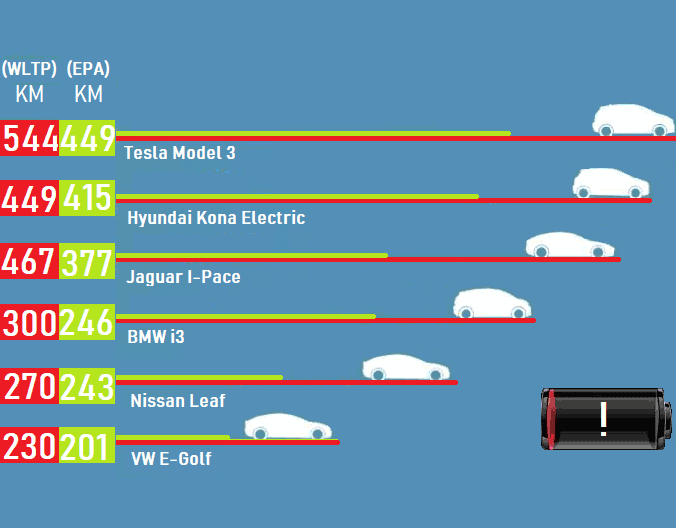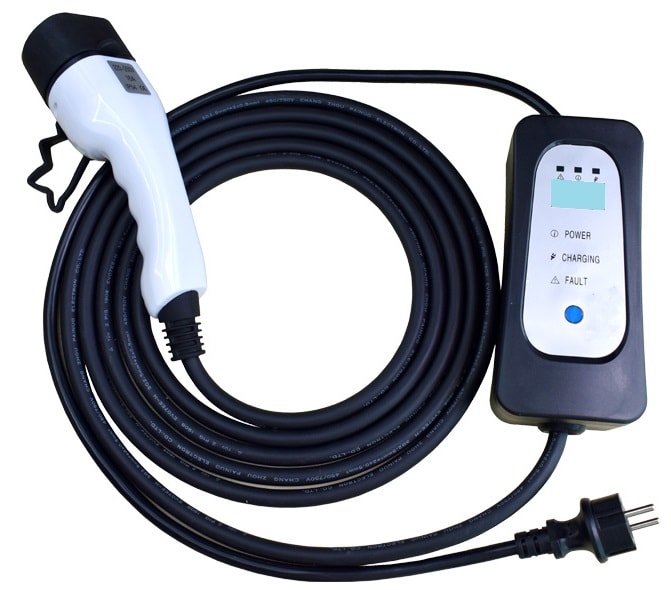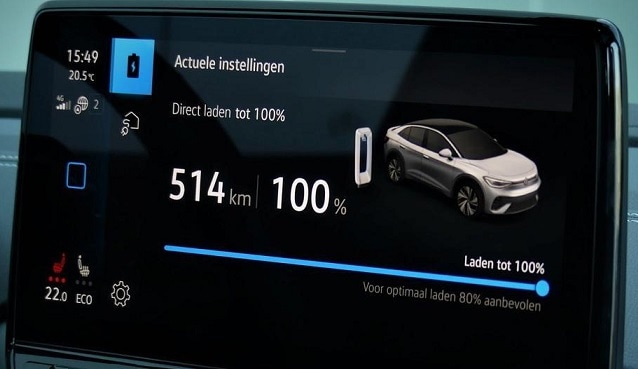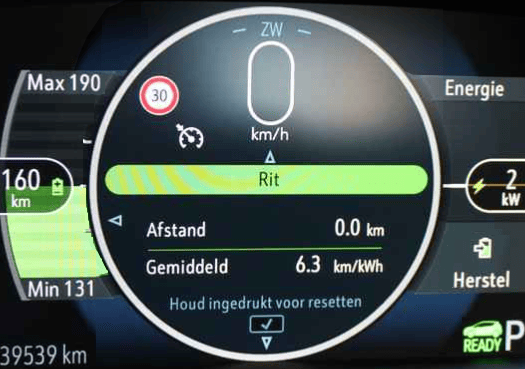Subjects:
- Preface
- Range
- Power [kW]
- Capacity [kWh]
- Consumption [Wh/km, km/kWh, kWh/100 km]
Preface:
With plugin hybrids and completely electric vehicles we are talking about capacity and power. This data is important when purchasing a vehicle, because we can use it to determine the range and charging times, among other things. For many people, the following question is decisive when choosing a car: How many kilometers does a vehicle travel on one battery charge, and how quickly does the battery go from empty to full charge? We often find the units kW and kWh, but often confusion arises as to what exactly this means. On this page we look at the meanings of capacity and power, and the units kW and kWh. In addition, it also describes what the consumption of an EV entails, and in which three ways we can encounter the consumption in the instructions or in the display of the on-board computer.
Action radius:
The range indicates the distance a vehicle can travel on one tank of fuel or one full battery charge. The range is expressed in kilometers. There are many factors that negatively affect the range. Below are a few points to keep in mind:
- driving style: with rapid acceleration and incorrect engine braking:
– fuel engine: when decelerating, the engine does not inject fuel;
– electric vehicle: with soft braking energy is returned to the battery. With hard braking, braking energy is “lost” because the brake pads are pressed against the discs; - vehicle weight: more weight results in higher fuel consumption;
- aerodynamics: with a bicycle carrier or roof box, consumption increases as a result of air resistance;
- low tire pressure;
- low outside air temperature;
- many electrical consumers are switched on (such as seat heating or electric heating);
- turned on air conditioning.

The driver has a lot of influence on the range. If the above points are taken into account, the fuel consumption of the vehicle can be reduced and thus a higher range can be achieved.
Power [kW]:
The power is the amount of energy that can be delivered in one second. We express the energy in joules. 1 J/s (joules per second) is equal to 1 Ws (watt second). The term watt second is unusual, we speak of the unit "watt".
1 kW = 1000 watts = 1000 J/s = 1000 joules in 1 second.
With electric vehicles we encounter the power when charging or discharging the vehicle and the power delivered to the wheels:
- charging via an emergency charger (mode 2) at home in the socket with a capacity of 2,3 kW;
- charging via a fast charger along the highway (mode 4) with a capacity of 43 kW;
- the power delivered by the electric motor (torque multiplied by angular velocity) where the losses in the powertrain have not yet been taken into account:
– BMW iX3: 210kW;
– Peugeot e-208: 115 kW;
– Volkswagen ID.5: 128kW.

Capacity [kWh]:
The capacity indicates the amount of energy that can be stored in a battery. The higher the capacity of the battery, the higher the range will be.
With electric vehicles, we often see that kilowatt hours [kWh] are used as a measure of energy and battery capacity. As an example, the capacity of three fully electric vehicles is shown:
- BMW iX3: 74 kWh;
- Peugeot e-208: 50 kWh;
- Volkswagen ID.5: 77 kWh.

The capacity in kilowatt hours arises from three factors:
- Kilo: multiplier x 1000;
- Watt: unit of power;
- Hour: an hour has 60 minutes of 60 seconds, so a total of 3.600 seconds.
One kilowatt hour [kWh] is equal to 3.600 kilowatt second [kWs].
Consumption [Wh/km, km/kWh, kWh/100 km]:
The charging capacity, consumption and power output of electrical appliances is indicated in the unit “watt”. If we leave a device with a consumption of 100 watts on for an hour, then this device has consumed 100 watt hours of energy. If we leave this device on for ten hours, it will have consumed a total of 100 watts * 10 hours = 1.000 watt-hours. This is equal to 1 kWh (1 kilowatt hour).
When calculating the cost of fully charging the battery pack, we multiply the capacity (kWh) by the price per kWh. To calculate what a vehicle consumes, we divide the capacity (converted into watt hours) by the number of kilometers before the battery pack is empty. Fuel consumption is often mentioned in vehicle specifications Wh/km .
The instrument panel of the vehicle can read consumption km/kWh of kWh / 100 km indicate. We can compare this with the different ways in which we see the consumption of the fuel engine, namely in km/l, or l/100 km. We can calculate this.

WH/km:
The HV battery of the BMW iX3 has a capacity of 74 kWh. The consumption of this car is 192 Wh/km. This indicates how many watt hours (0,001 kWh) the car consumes per kilometer. The BMW iX3 can travel about 74 km on its 385 kWh battery. The consumption is then: 74.000 Wh / 385 km = 192 Wh/km.
Km/kWh:
The consumption monitor in the instrument panel or on-board computer can indicate current or average consumption in km/kWh. In the case of the BMW iX3 with a consumption of 192 Wh/km, we can convert this consumption by dividing the number 1000 (kWh) by 192 (Wh). The ratio is 5,21. 5,21 km can be driven per kWh. The consumption of 5,2 km/kWh is therefore shown in the instrument panel. Of course, this is the average consumption, and the actual consumption depends on the driving conditions.
kWh/100km:
Consumption can also be displayed in kWh/100 km. The BMW iX3 of this example consumes 74 kWh and can therefore drive 385 km.
- Consumption is 74 kWh / 385 km;
- When we divide the capacity by the range and multiply by one hundred (74/385*100) we get the number: 19,22;
- That gives the consumption: 19,22 kWh / 100 km.
The following table shows the capacity, range and consumption in the three different ways of the three aforementioned cars.
An overview with examples about EV charging is shown on the page: Charging electric vehicles described.

